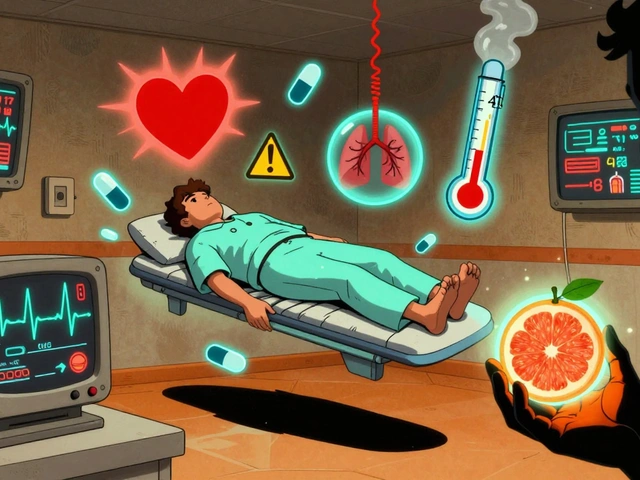Minocin Side Effects: The Real‑World Guide
If your doctor prescribed Minocin (minocycline), you probably have a few questions about what to expect. It’s an older tetracycline antibiotic that works well for acne, respiratory infections, and some tick‑borne illnesses. Like any drug, it can cause side effects, and knowing the signs early can keep you from unnecessary worry.
Common reactions you’ll likely notice
Most people experience mild issues that go away on their own. The top ones are:
- Upset stomach – nausea, vomiting, or a vague tummy ache. Taking Minocin with food usually helps.
- Diarrhea – Keep hydrated and consider a bland diet if it’s persistent.
- Skin changes – A faint rash or increased sensitivity to sunlight. Sunscreen and a hat are must‑haves.
- Headache – Often mild; over‑the‑counter pain relievers are fine unless your doctor says otherwise.
These symptoms typically fade after a few days. If they linger longer than a week, give your pharmacist a call.
Rare but serious side effects
While uncommon, some reactions need immediate attention:
- Severe allergic reaction – swelling of the face, hives, or trouble breathing. Call 911 right away.
- Autoimmune hepatitis – Yellowing of the skin or eyes, dark urine, and intense fatigue. Stop the drug and see a doctor.
- Vandetanib‑like discoloration – A blue‑gray tint to the skin, especially on the shins, after long‑term use. Discuss alternatives if this appears.
- Intracranial hypertension – Headaches that worsen when lying down, blurred vision, or ringing in the ears. Seek medical help promptly.
These events are rare, but being aware can save you time and trouble.
Another thing to watch for is drug interactions. Minocin can make blood thinners like warfarin work stronger, so regular blood tests are a good idea if you’re on both. It also reduces the effectiveness of birth control pills, so consider backup contraception.
For people with liver or kidney problems, dosage may need adjustment. Always tell your doctor about existing conditions before starting Minocin.
In practice, most folks finish a standard 4‑week course without major issues. If you miss a dose, take it as soon as you remember—unless it’s almost time for the next dose. Never double up.
Finally, store Minocin at room temperature, away from moisture and heat. Keep it out of reach of children.
Bottom line: Minocin is effective, and most side effects are mild. Keep an eye on your body, use sunscreen, stay hydrated, and contact a healthcare professional if anything feels off. With a bit of common sense, you can get the infection cleared without a hassle.
 21 September 2025
21 September 2025
Minocin (Minocycline) Guide: Uses, Dosage, Side Effects & Safety
A clear, up‑to‑date rundown of Minocin - what it treats, how to take it, common side effects, drug interactions, and practical tips for patients.
Latest Posts
-

Elderly Dehydration and Diuretics: How to Protect Kidneys and Prevent Hospitalization
-

How Calcium & Phosphorus Drive Osteodystrophy Development
-

Best 5 Natural Melasma Remedies for Faster Skin Lightening
-

When to Seek Medical Help for a Suspected Drug Interaction
-

FDALabel Database: How to Search Drug Labels Accurately and Efficiently

13